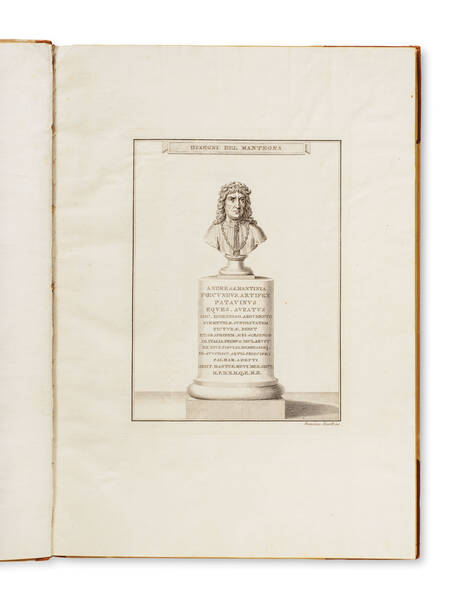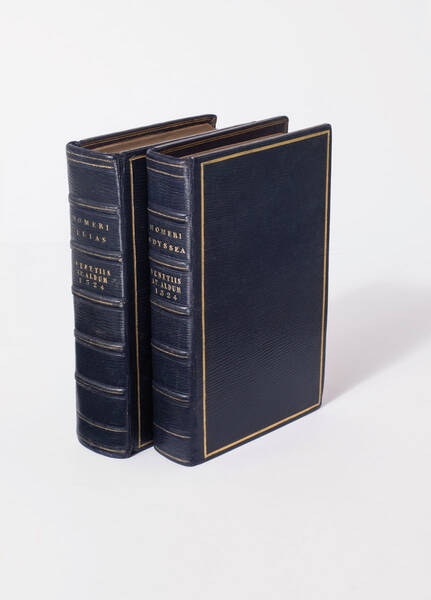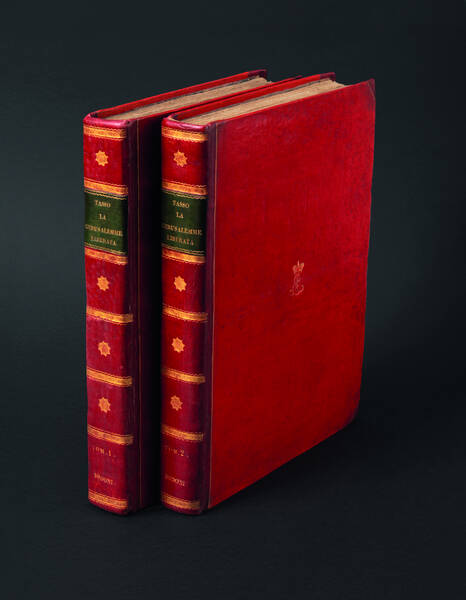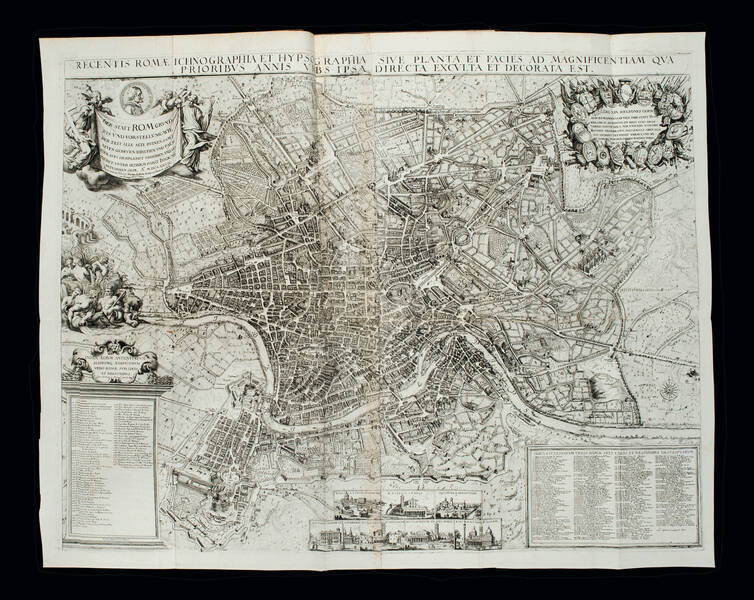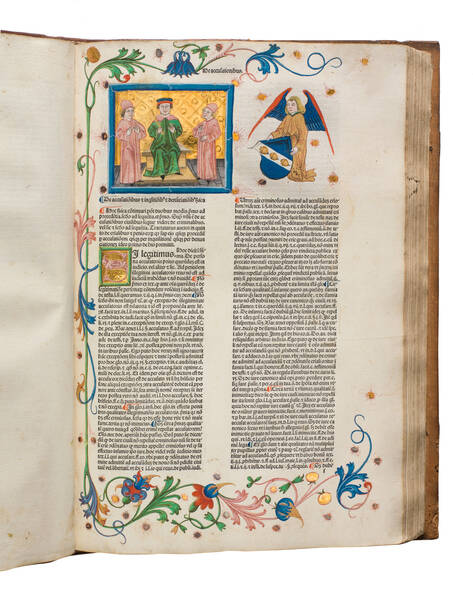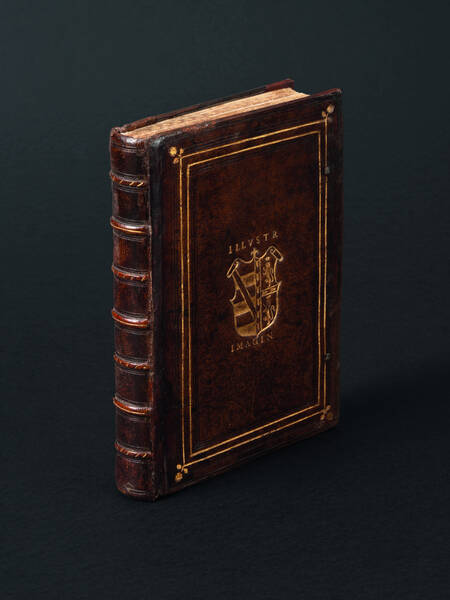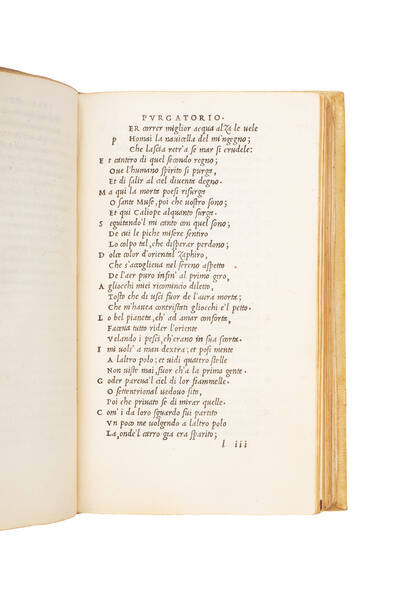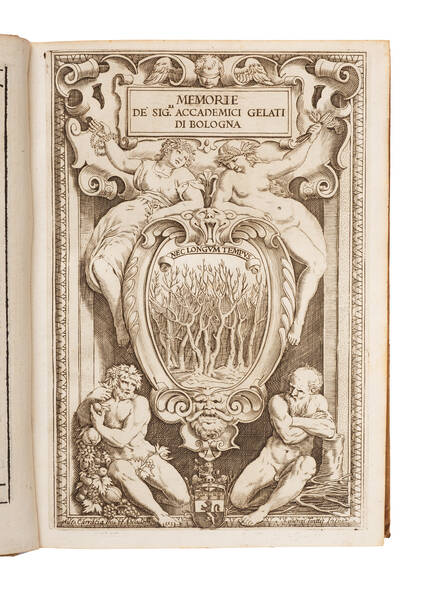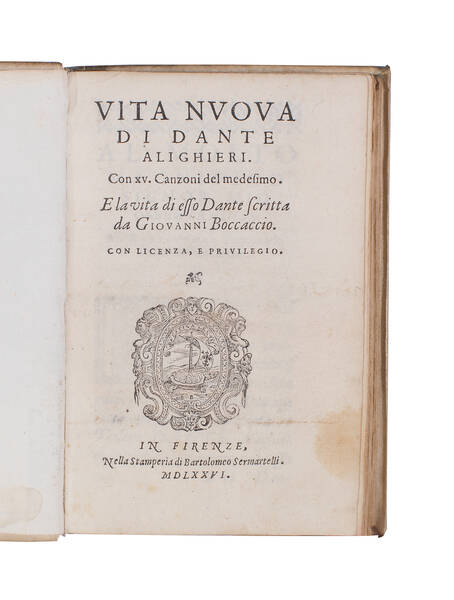[DÜRER, Albrecht] Marcantonio RAIMONDI. [Life of the Virgin Mary].
[Bologna, c. 1685/90 (engraved Bologna, c. 1506)],Folio (399 × 288 mm), 17 engraved plates bound in early XVIII century boards in a contemporary paper slip case with the ex libris of the Milanese family of Cavazzi della Somaglia.
The complete series of 17 very large numbered engraveings of the Life of the Virgin printed in c. 1685/90 from the original copper plates by Raimondi, after Dürer. Each print bears Dürer's AD monogram and the last also Raimondi's MAF monogram. Late 18th-century boards, in a paste-paper slipcase with an engraved label showing the coat of arms of the Count of Somaglia, [Don Gaetano?] Cavazzi in Milan. In very good condition and with large margins. Binding somewhat worn and with a few cracks and minor stains.
The Life of the Virgin Mary engravings were made by Marcantonio Raimondi (c.1480 - c. 1527/34) soon after discovering the original woodcut prints by Albrecht Dürer (1471 - 1528) sold in Venice, in the Piazza San Marco. According to Vasari, Marcantonio spent all of his money to acquire the 17 prints available in 1506 and reproduced them faithfully. “Marcantonio turned his attention to every detail of those prints with all diligence, and thus to copying [...] carefully studying stroke by stroke [...] copied there the sign which Albrecht had made on his works, that is, the letters A.D. He succeeded in capturing Albrecht's style to such an extent that the prints were believed to be by Albrecht, and were bought and sold as such, since no one knew that the prints had been made by Marcantonio. When this situation was described to Albrecht in Flanders, and when one of the said copies were sent to him, Albrecht was moved to such fury that he left Flanders and went to Venice, where he complained about Marcantonio to the Senate. However, he got nothing but the sentence that Marcantonio could no longer add the name or monogram of Albrecht to his work. Copying Dürer's monogram [...] was a publisher's acknowledgment of a model that was in any case not protected against copying in Venice, and placed along with Marcantonio's monogram and [the publishers] device on the last print in the series, a position fully analogous to the colophon of a book” (Pon, pp. 39-66). Despite Marcantonio having to refrain from using Dürer's monogram in future copies, others continued to do so, pushing Dürer to publish with his 1511 edition of The Life of the Virgin a warning to anyone who attempted to counterfeit his work: “Beware, you envious thieves of the work and invention of others, keep your thoughtless hands from these works of ours.” (Pon, pp. 39-66).
Despite drawing out such a response from Dürer, Raimondi's engravings were highly acclaimed for their high technical skill and beauty. “What [was] new about Marcantonio is the direction that he created for the art of engraving, for under the influence of Dürer's prints he changed it from a medium that imitated pen and silverpoint drawing toward one that could approximate the effects of painting and sculptural form. In this specific sense, then, Marcantonio may be considered to have invented the means for reproductive engraving. Throughout his career he progressively developed a technique that could achieve painterly chiaroscuro effects and sculptural volumes. His clearly disciplined technique was one that could be simplified to the bare essentials of sequences of dense cross hatchings, more widely spaces parallel hatchings, and light flecks or dots to express tonal transitions from dark to light. Yet even Marcantonio's closest followers never were able to imitate the multiplicity of effects that he achieved with this technique which, in the finest impressions of his best works, create dense, luminous tones, varied textures, and pure rounded volumes. [...] Nurtured by his training in the late quattrocento humanist currents in Bologna, was his fascination with ancient sculpture, which in turn had an impact upon his overwhelming dedication to rendering rounded, sculptural, three-dimensional figures. The second, in part brought about by his lifelong debt to the engraving and woodcuts of Albrecht Dürer, was his attempt to create a highly controlled technique which was completely functional in its conception. Marcantonio's technique was to develop in a different - less expressive, more disciplined - direction from Dürer's, but the great German printmaker was an inexhaustible, changing, and continuous source for Marcantonio throughout his career.[...] In general when copying Dürer's prints, Marcantonio simplified and regularized Dürer's technique, but he also learned the greater variety and expressive value of Dürer's prints, an effects that was achieved through densely packed, fine concentric strokes [...] His prints were the established conduit for classical style, and he maintained his reputation as the foremost engraver of Renaissance art until well into the nineteenth century, when photography became the preferred reproductive medium.” (Shoemaker et al., pp. 3-4; p.20)
Lisa Pon, Raphael, Dürer, and Marcantonio Raimondi: Copying and the Italian Renaissance Print. 2004. Shoemaker et al., The engravings of Marcantonio Raimondi, 1981.
Bartsch 621–637 (also in The Illustrated Bartsch, vol. XXVII); BDPI 1630611; Delaborde 235–251.
Other Books
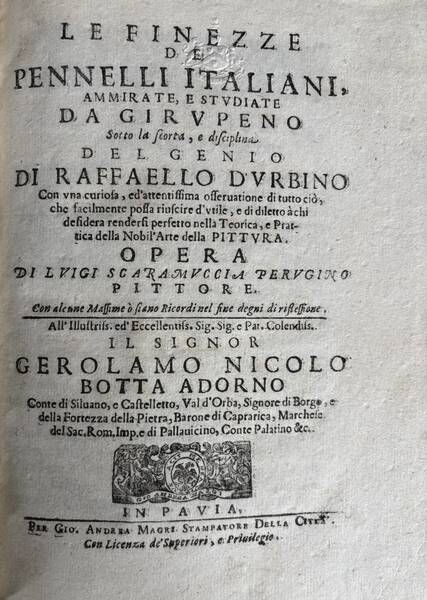
SCARAMUCCIA, Luigi
Le finezze de pennelli italiani, ammirate, e studiate da Girupeno sotto la scorta, e disciplina del genio di Raffaello d'Urbino : con una curiosa,...
€ 1.200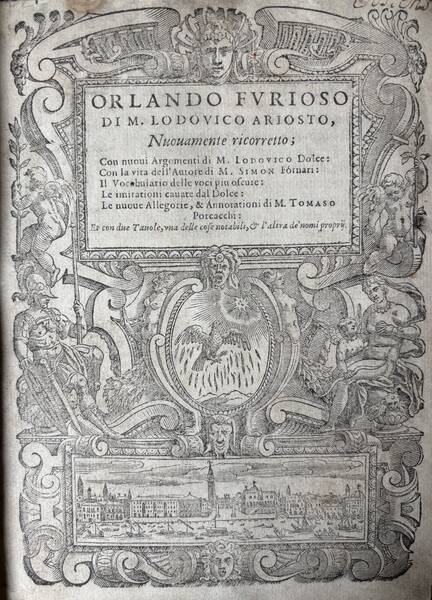
ARIOSTO, Ludovico
Orlando Furioso di M. Lodovico Ariosto, nuovamente ricorretto; con nuovi argomenti di M. Lodovico Dolce: con la vita dell'autore di M. Simon Fornari:...
€ 3.000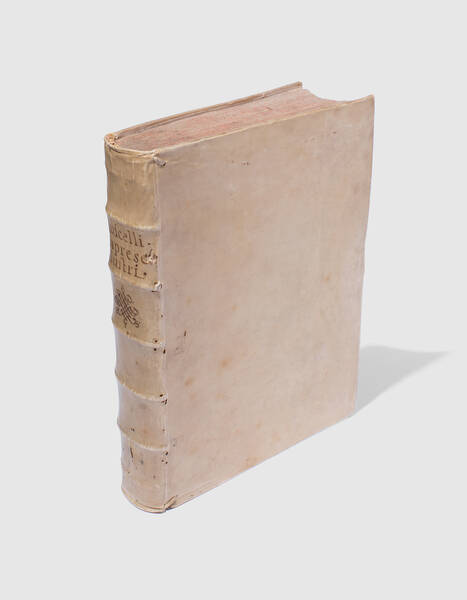
RUSCELLI, Gerolamo
Le imprese illustri con espositioni, et discorsi del s.or Ieronimo Ruscelli.
SOLD OUT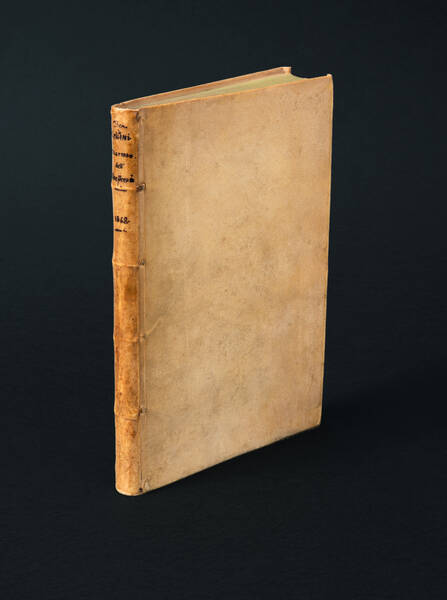
CELLINI, Benvenuto
Due trattati vno intorno alle otto principali arti dell'oreficeria. L'altro in materia dell'arte della scultura; doue si veggono infiniti segreti nel...
€ 12.000
ALIGHIERI, DANTE
La Divina Comedia Di Dante, di nuouo alla sua vera lettione ridotta con loaiuto di molti antichissimi esemplari. Con argomenti, et allegorie per...
SOLD OUT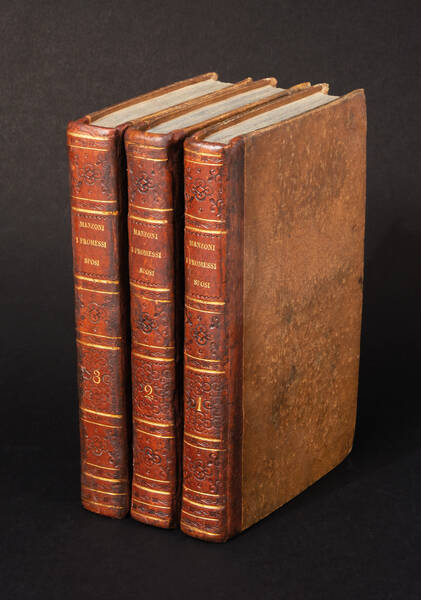
MANZONI, Alessandro
I promessi sposi, storia milanese del secolo XVII scoperta e rifatta da Alessandro Manzoni.
€ 11.500MEDA RIQUIER rare books ltd.
4 Bury Street St James's
SW1Y 6AB London
Phone +44 (0) 7770457377
info@medariquier.com
![[Life of the Virgin Mary] [Life of the Virgin Mary]](https://www.medariquier.com/typo3temp/pics/39d090cabb.jpeg)
![[Life of the Virgin Mary] [Life of the Virgin Mary]](https://www.medariquier.com/typo3temp/pics/e7d4ed162c.jpeg)
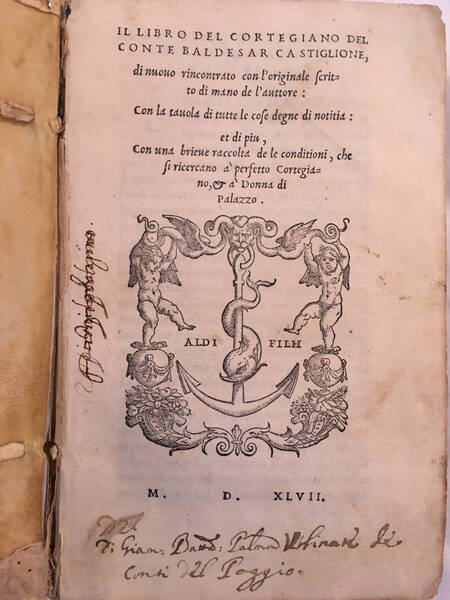
![[Life of the Virgin Mary] [Life of the Virgin Mary]](https://www.medariquier.com/typo3temp/pics/cbb0f7a08f.jpeg)
